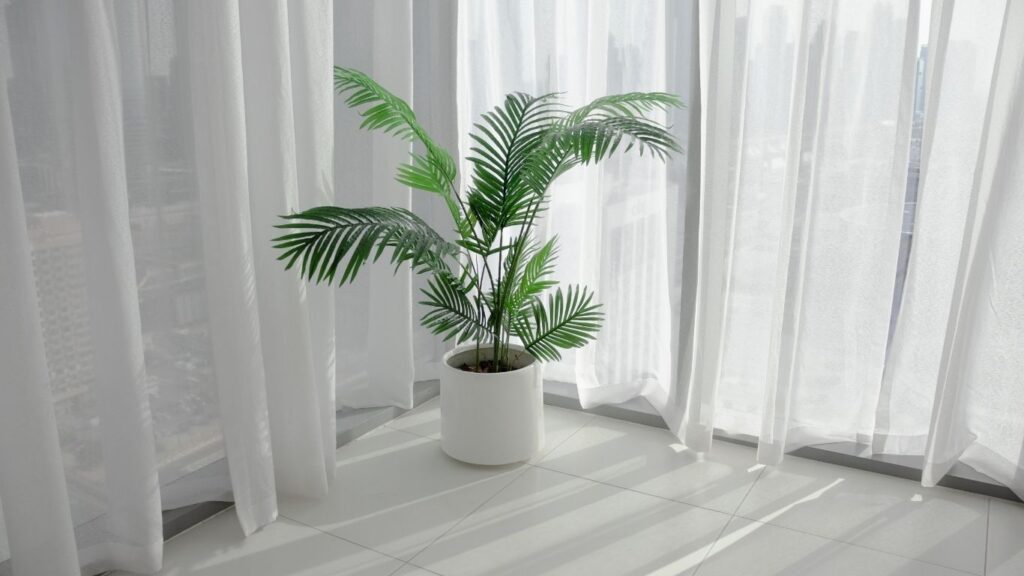Air quality, both outdoors and indoors, significantly affects our overall health, with profound implications for mental well-being. Poor air quality, characterized by pollutants like dust, mold, chemicals, and allergens, can lead to a range of adverse health effects. These include respiratory issues, physical fatigue, and more critically, impacts on mental health such as worsened mood, increased stress levels, and diminished cognitive functions, including concentration and memory.
Indoor plants offer a natural and aesthetic solution to this pervasive issue. Through their inherent air-purifying abilities—absorbing toxins and producing oxygen—these green companions not only enhance the visual appeal of our spaces but also improve indoor air quality. This, in turn, can lead to better mental health outcomes. By integrating indoor plants into our homes and workplaces, we can create healthier environments that support both our physical and mental well-being.
Air Quality and Mental Health: The Purifying Role of Indoor Plants
The Science Behind Air Purification by Plants
Photosynthesis is the process by which plants convert light energy into chemical energy, using carbon dioxide (CO2) and water. This process not only produces glucose, which the plant uses for nourishment, but also releases oxygen into the air, contributing significantly to air purification. Beyond producing oxygen, indoor plants can absorb pollutants like formaldehyde, benzene, and trichloroethylene, common in household products and building materials.

Research has demonstrated the effectiveness of indoor plants in reducing these pollutants. A seminal study by NASA, the Clean Air Study, found that certain plants have significant capabilities to filter harmful toxins from the air. This study laid the groundwork for using plants as sustainable aids in improving indoor air quality.
Some of the most effective air-purifying plants identified by NASA include the Peace Lily (Spathiphyllum), which is particularly good at absorbing ammonia, benzene, formaldehyde, and trichloroethylene. Others include the Snake Plant (Sansevieria trifasciata), which is highly efficient in removing formaldehyde and benzene, and the Spider Plant (Chlorophytum comosum), known for its ability to clear carbon monoxide and other toxins. These plants not only enhance indoor aesthetics but also play a crucial role in maintaining a healthier living environment.
Mental Health Benefits Linked to Cleaner Air
Reducing indoor air pollutants is not just beneficial for physical health; it significantly enhances mental well-being too. Studies have shown that improved air quality can lead to lower stress levels, reduced symptoms of anxiety, and diminished rates of depression. One pivotal study by the American Psychological Association highlighted that individuals who live and work in environments with cleaner air report fewer instances of mental health issues compared to those in poorly ventilated spaces.
The correlation between air quality and mental health extends to cognitive functions as well. Cleaner air can enhance mental clarity, concentration, and memory. According to a Harvard Public Health study, participants who worked in well-ventilated offices with lower levels of air pollutants performed better on cognitive function tests than those in conventional office environments. The study inferred that reduced exposure to carbon dioxide and volatile organic compounds (VOCs), common indoor pollutants, significantly improves decision-making performance and strategy.

Furthermore, research from the University of Michigan connects exposure to high air pollutant levels with increased mental fatigue and reduced productivity. Their findings suggest that the presence of indoor plants, which help purify the air by absorbing these pollutants, can create a more conducive environment for learning and working, thereby enhancing cognitive abilities over time.
Incorporating elements that improve indoor air quality, therefore, not only fosters a healthier physical environment but also cultivates a space where mental and cognitive wellness can thrive.
Practical Tips for Integrating Indoor Plants into Living Spaces
Choosing the right indoor plants for your home or office involves considering light levels, space, and care needs. For areas with low light, such as bathrooms or hallways, opt for plants like snake plants or pothos, which thrive in minimal light. In contrast, if you have ample sunlight, consider aloes or rubber plants, which need more exposure to thrive.
To maximize the air-purifying effects of your plants, regular maintenance is key. Ensure that you water them according to their specific needs—overwatering can be as harmful as underwatering. Also, keep the leaves clean from dust to aid efficient photosynthesis and better air purification.
Incorporating plants into your decor not only enhances aesthetics but also promotes health benefits. Use hanging planters to add greenery without sacrificing floor space, or create a living wall for dramatic effect and efficient space use. For offices, small desktop plants like succulents or spider plants can add a touch of nature without requiring extensive care. By integrating plants creatively, you can enhance the visual appeal of your space while also leveraging their health-promoting properties.

Case Study/Personal Story
Sarah, a freelance graphic designer, noticed a significant improvement in her studio’s atmosphere after introducing several indoor plants. Living in a bustling city, she often found the air in her apartment stale and her stress levels high. After placing several peace lilies and snake plants around her work area, she not only observed a noticeable freshness in the air but also felt a calming presence that helped her manage her deadlines more serenely. The greenery seemed to offer both a visual and environmental respite, leading to better focus and a significant reduction in her daily anxiety levels.
Conclusion
the role of indoor plants in enhancing air quality and mental health cannot be overstated. By naturally purifying the air and reducing harmful pollutants, these green companions contribute to a healthier and more soothing environment. Whether it’s improving concentration, reducing stress, or simply adding a touch of tranquility to our living spaces, the benefits of incorporating plants into our daily surroundings are profound and multifaceted. Embracing the simple yet effective practice of growing indoor plants can lead to significant improvements in both our physical and mental well-being, making it a worthwhile endeavor for everyone.
Also read: 10 Effective Daily Habits for Body Detoxification
